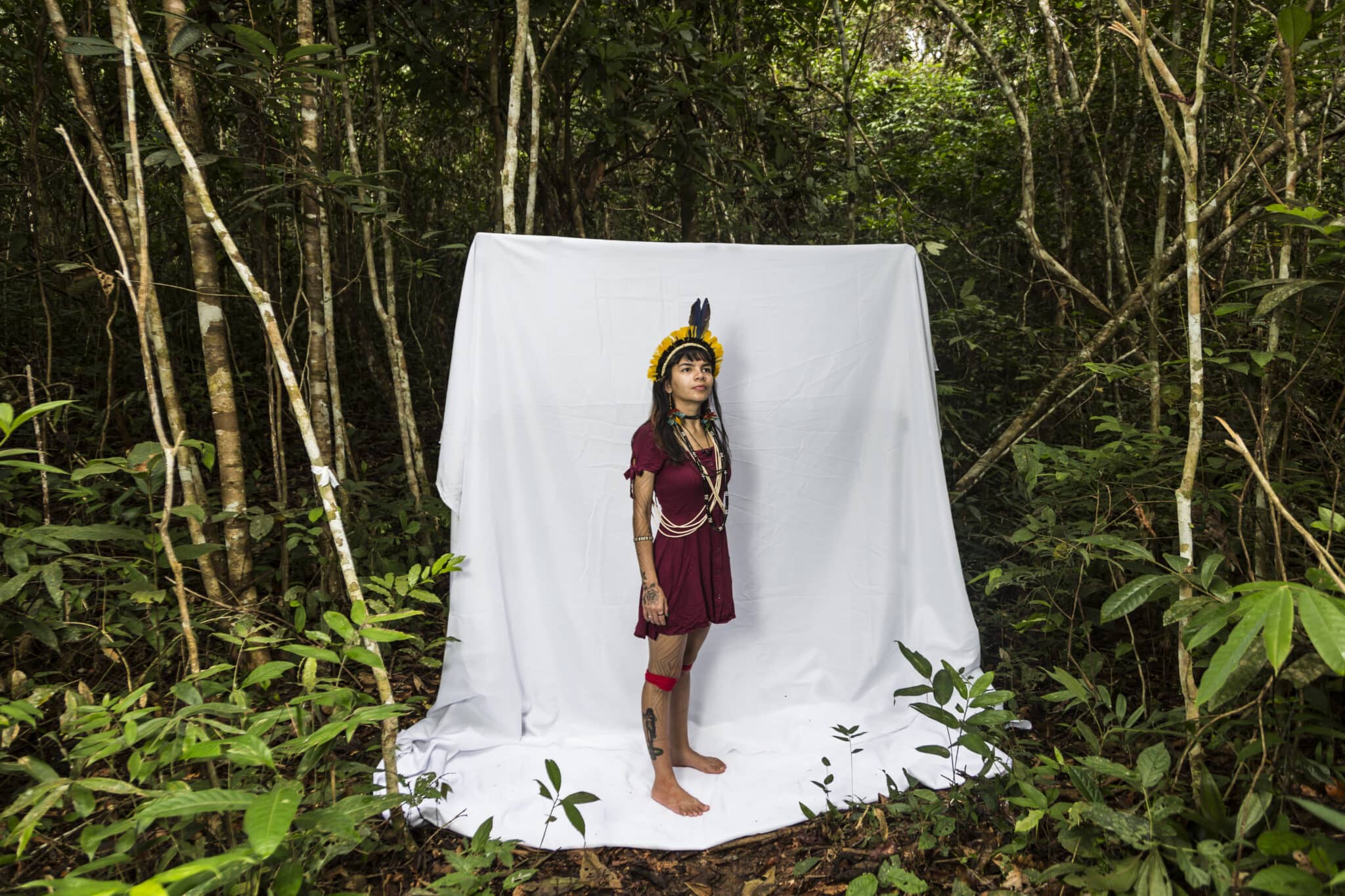
Saving the planet is a feminist struggle
In the project Mulheres na Luta Climática, Brazilian photographer Gabriela Di Bella set out to portray and tell the stories of women leading the fight against climate change in fields such as science, media, and community politics. Her images remind us that environmental activism is gendered.
By Alonso Almenara
Global warming is not gender-neutral. For example, 80% of people displaced by climate-related disasters are women. That is well known to Brazilian photographer Gabriela Di Bella: her project Mulheres na Luta Climática [Women in the Climate Struggle] traces women’s participation in different environmental struggle fields, focusing on their stories and their leadership.
The project consists of a series of portraits of women scientists, indigenous leaders, reporters, and community leaders: women involved in different areas of environmental activism working to mitigate climate change’s impact on nature or channel our way of life towards more sustainable forms of economic exploitation.
Climate change, we know, refers to long-term changes in temperatures and weather patterns. These changes may be natural, but today we know that human activities have been the main driver of climate change from the 19th century onwards, mainly due to burning fossil fuels such as coal, oil, and gas. These fuels generate greenhouse gas emissions that act as a blanket around the Earth, trapping the sun’s heat and raising temperatures.
Recent UN reports warning that thousands of scientists and government reviewers agreed that limiting global temperature rise to no more than 1.5°C would help us avoid the worst climate impacts and maintain a livable climate. However, current policies point to a temperature rise of 2.8 °C by the end of the century. For this reason, environmental activism is critical to achieving effective changes that will sustain human life in the coming decades: and the participation of women – the group most affected by this issue, along with children – is a crucial component.
“These women open roads, green paths in the middle of the cement of the ‘mercantile society’ so that many others can pass by them,” says Di Bella. “It’s a collective and tireless journey, whether treading among the trees in the Amazon, on the cement on the outskirts of cities, or sailing the ocean, where there is no place to give up.”
Venisse Schossler was the first woman scientist to set foot in Antarctica through the Cryosphere 2 project, which studies the relationship between extreme events in the Brazilian climate and the frozen continent.
She posed for a photo in the laboratory, where she analyzed the water to prove this relationship between continents. Porto Alegre, RS, Brazil – January 2023 – Photo: Gabriela DiBella
The young indigenous leader Txai Suruí, president of the Kanindé Institute, caught the world’s attention with her speech at COP26. She and her family have always been the target of threats because they struggled to preserve the forest in the reserves of their state, Rondônia. Porto Velho, Rondônia, Brazil – Photo: Gabriela DiBella
Amanda Costa, a young activist born in Brasilândia, a suburb of the city of São Paulo, travels the world giving lectures, participating in COPs, and disseminating information on climate racism and its consequences for those living in the outskirts of large cities, sharing information about climate racism and its implications for those who live in the outskirts of large cities. São Paulo, SP, Brazil – Photo: Gabriela DiBella
Paulina Chamorro, a journalist born in Chile and based in Brazil, has been working for more than 20 years with a focus on environmental journalism, working on preservation and giving space for interviews with activists and scientists in the podcast Voices of the Planet. Ilhabela, SP, Brazil – Photo: Gabriela DiBella
Preta Ferreira, a multi-artist activist, was unjustly arrested for political persecution. She has always fought for the right to housing, leading the movement to occupy empty buildings (abandoned for real estate exploration) in downtown São Paulo. Reusing these spaces to give life and housing to degraded places is also an act of preserving environmental resources. Preta also works as an advisor to the Brazilian Green New Deal. São Paulo, SP, Brazil – Photo: Gabriela DiBella
Gabriela Di Bella has a Master’s degree in audiovisual from Universidade Anhembi-Morumbi, where she develops research on fake photography. She works as a freelance photojournalist developing her projects and collaborates with media such as National Geographic, The Intercept, Folha de S. Paulo, and BBC Brasil.
She received the 2013 ADEP-DF journalism award for the photos of the article “Presos e Esquecidos” about the performance of the Public Prosecutor’s Office inside the Central Penitentiary. In 2018, her portrait essay of the Paulista Avenue Gay March was selected for the exhibition “Con Mucho Orgullo” at the Museum of Sexual Diversity of São Paulo.
E-CO/23]
This work is one of the inspirations for E-CO/23], the new edition of our meeting of photographic collectives, which this year will have as its thematic axes: Ecologies, Territories, and Communities.
Through this call, we are interested in gathering stories of sustainable development, community movements, and ways of inhabiting the land in the community to achieve new narratives built from the plurality of collective creation.
Each selected project will receive support of 5,000 euros for its production. The tasks can be presented by existing collectives or by groups of people working in collaboration for this project in an interdisciplinary way.
The selected groups will participate in a collective process of production and reflection that will be accompanied by pedagogical support from specialists in the themes.
Once the production stage is completed, the project results will be presented in one or more exhibitions that may rotate and on the digital platforms of Fundación VIST, the AECID, and the participating Spanish Cultural Centers or the institutions they designate. The aim is to consolidate networks for creating and circulating visual narratives in the Ibero-American territory.


